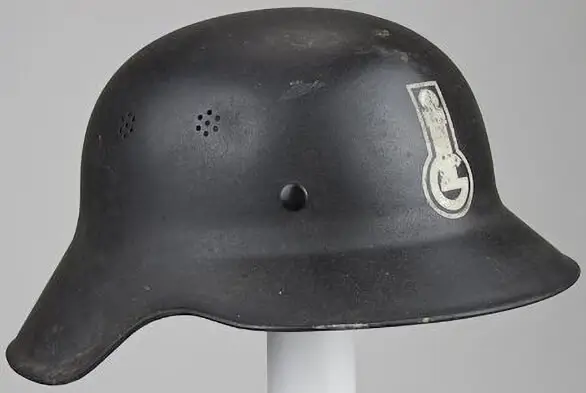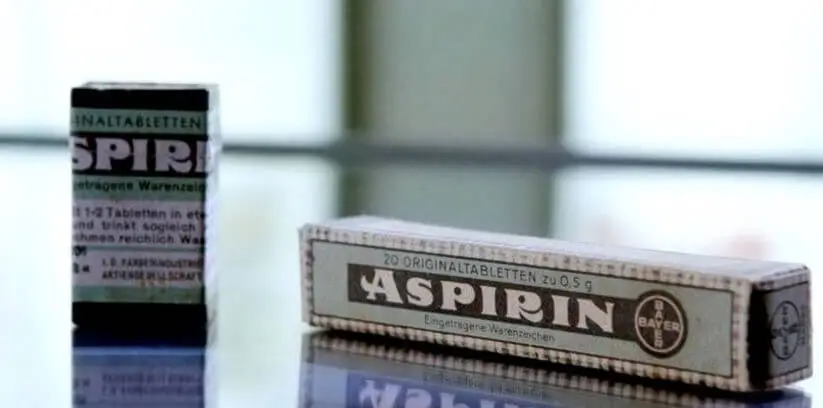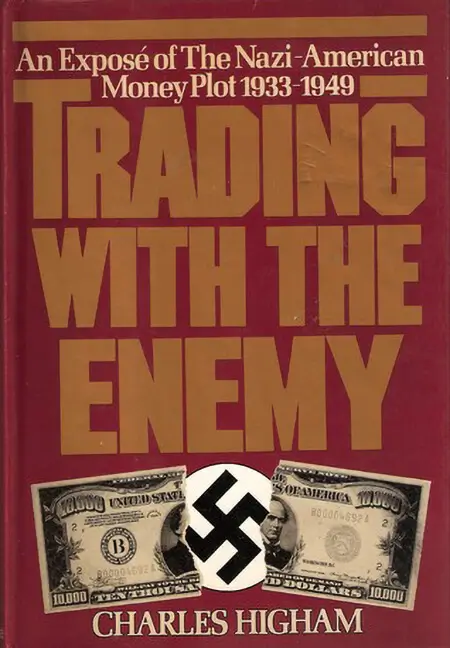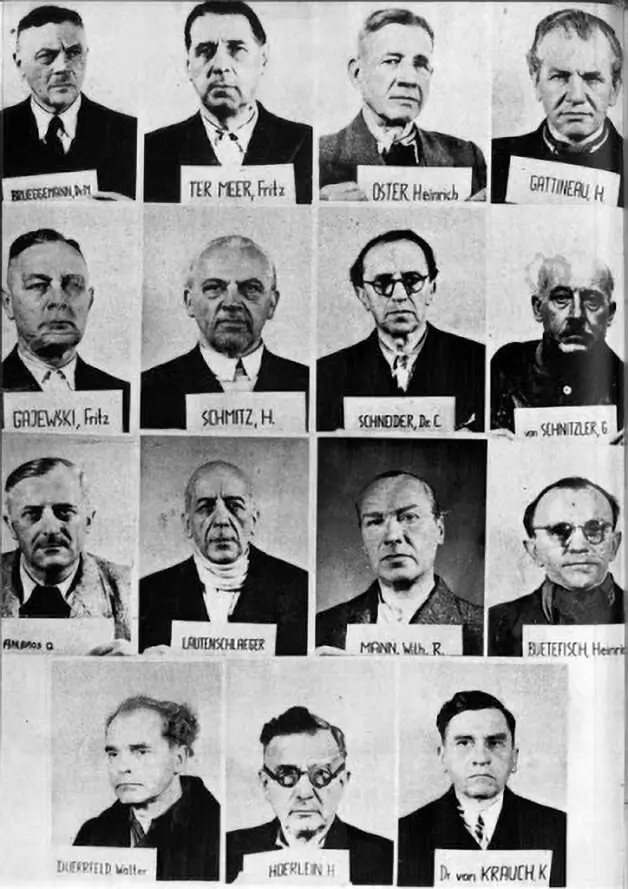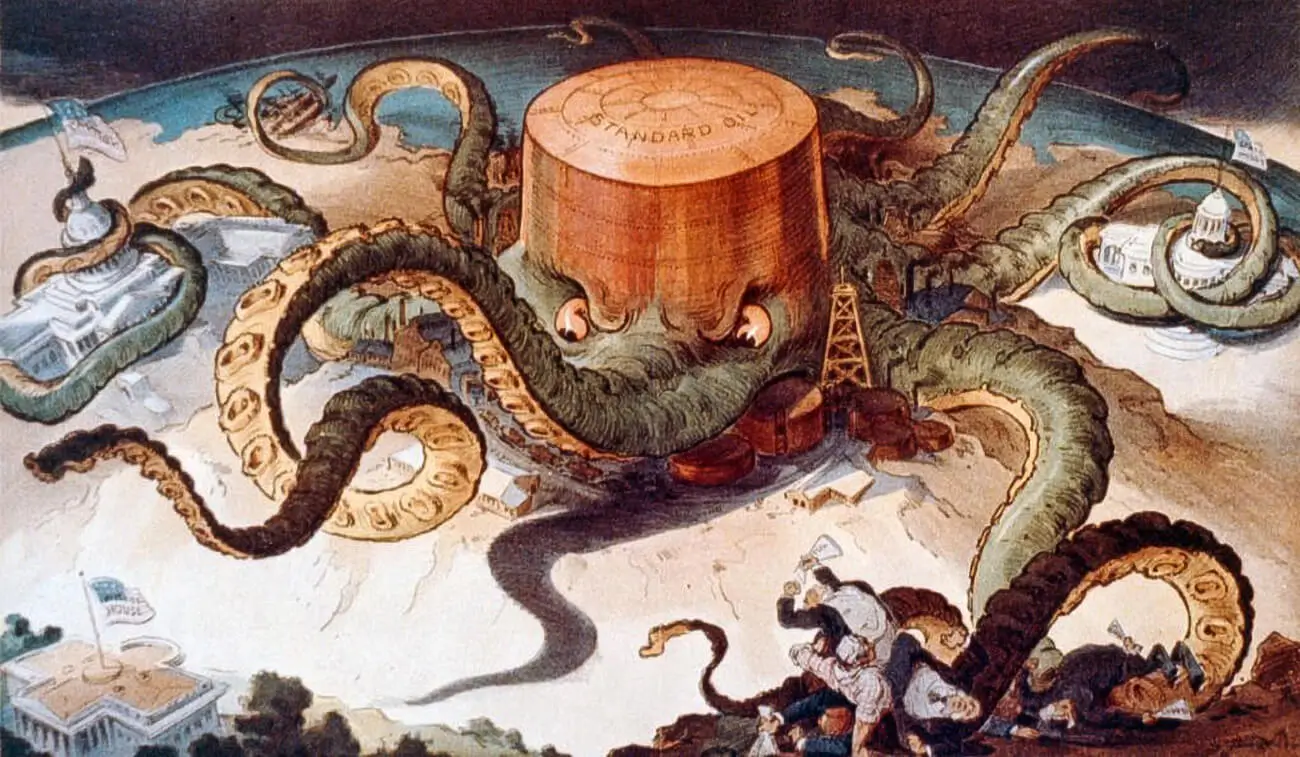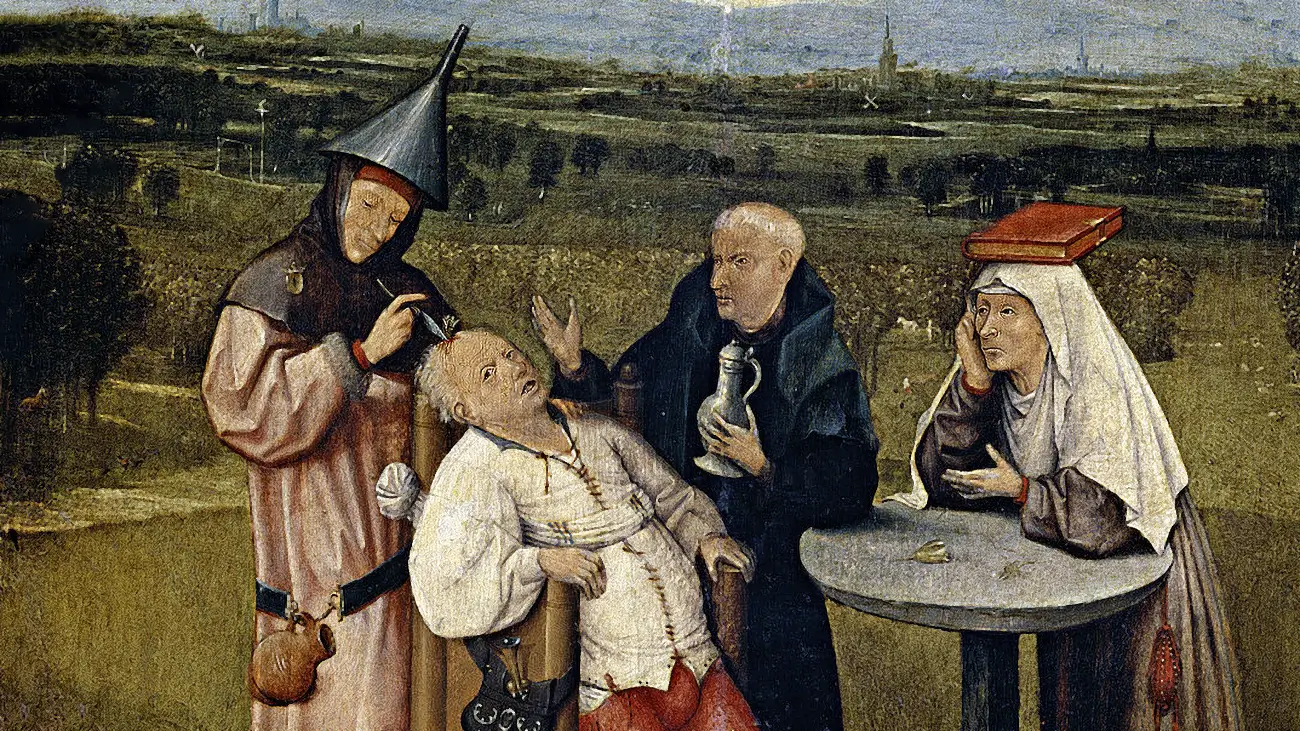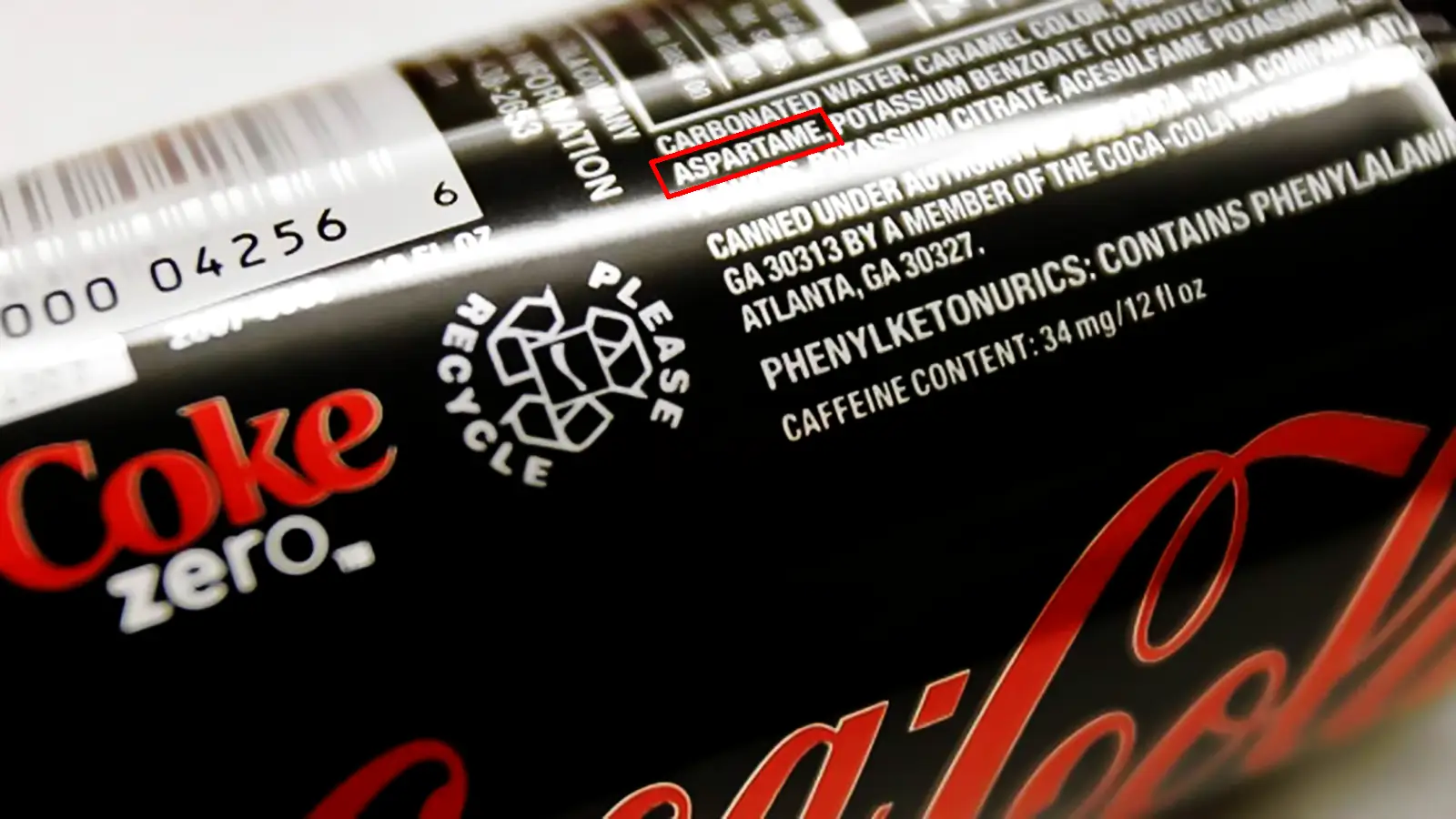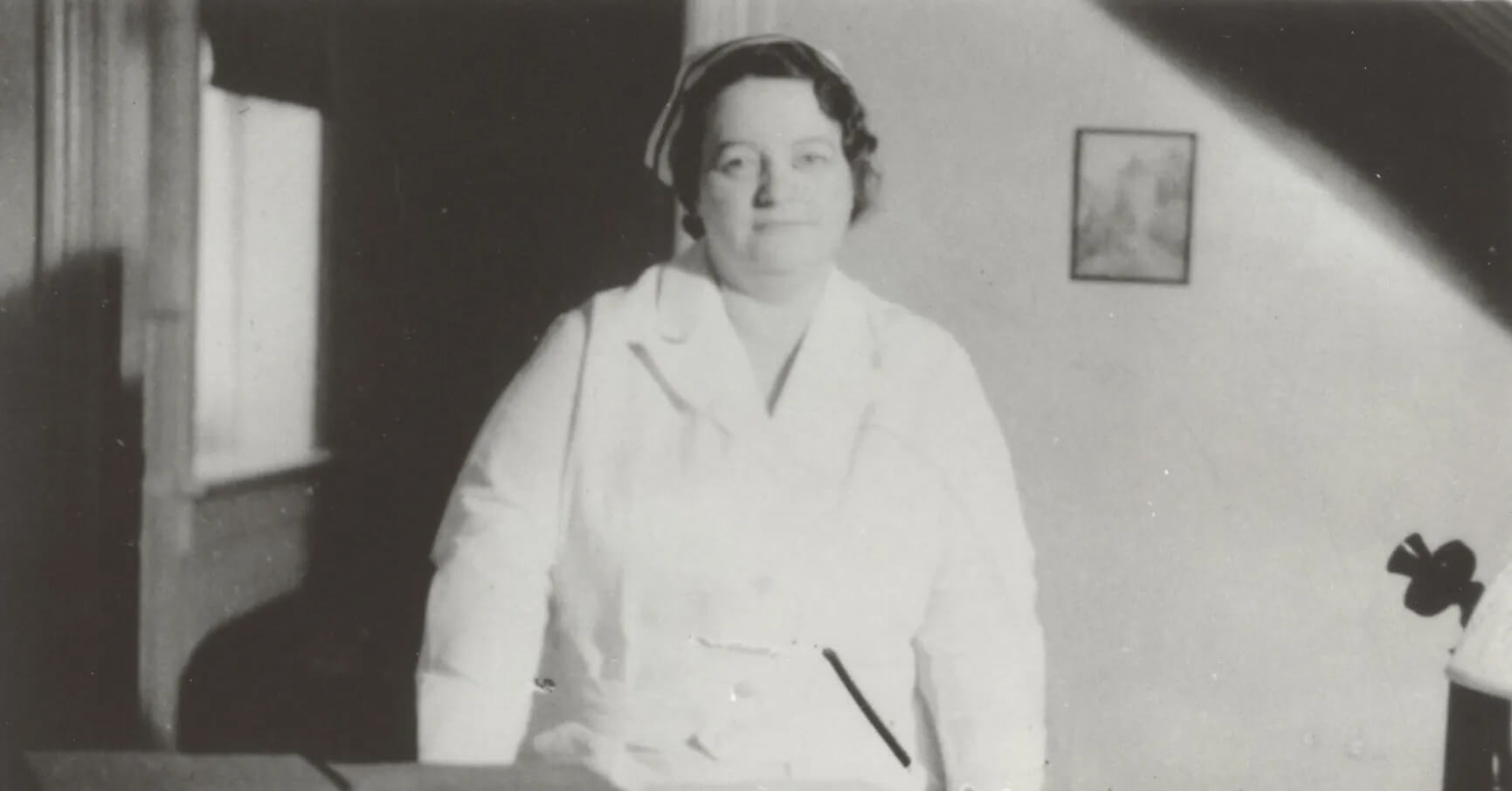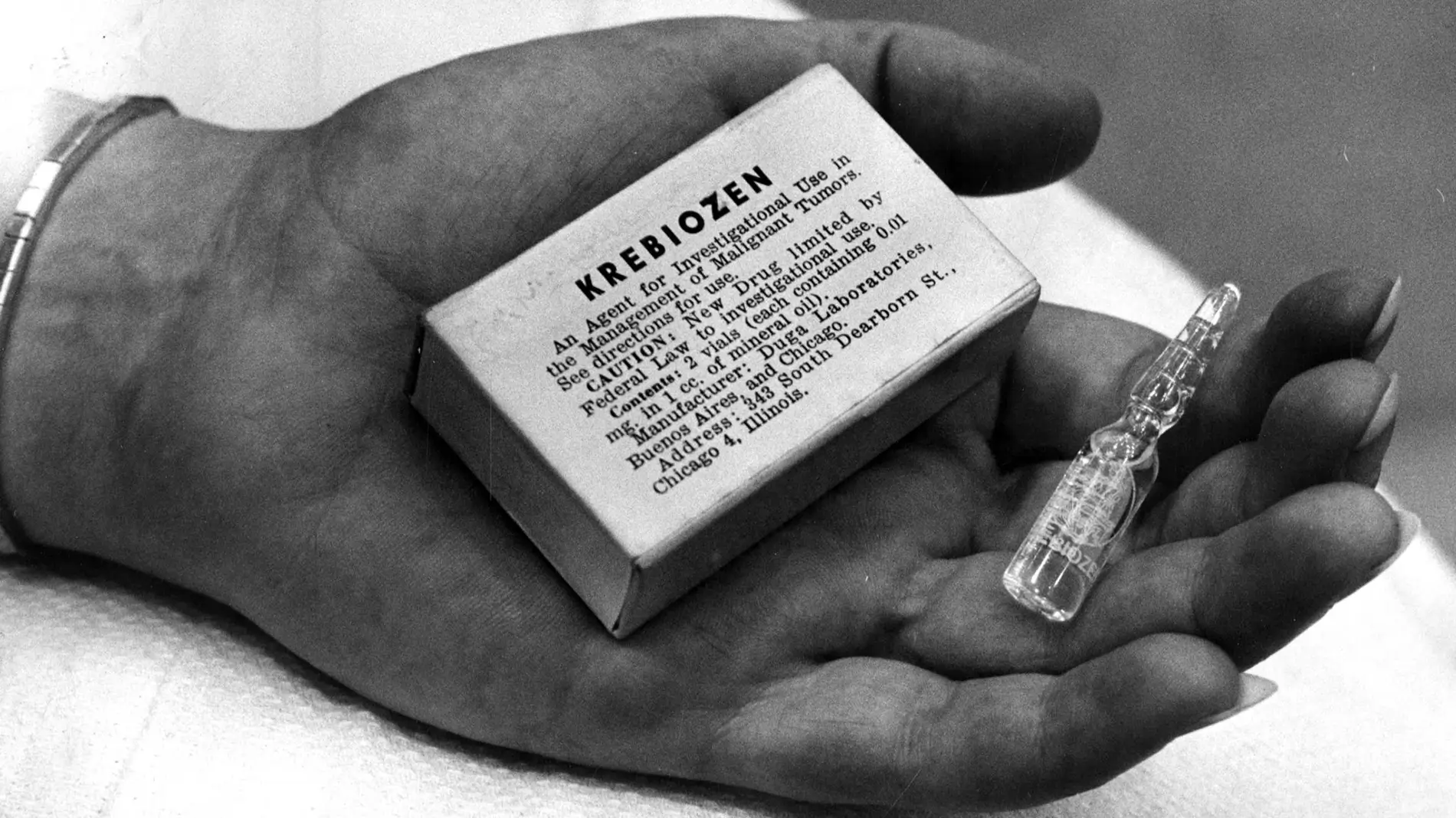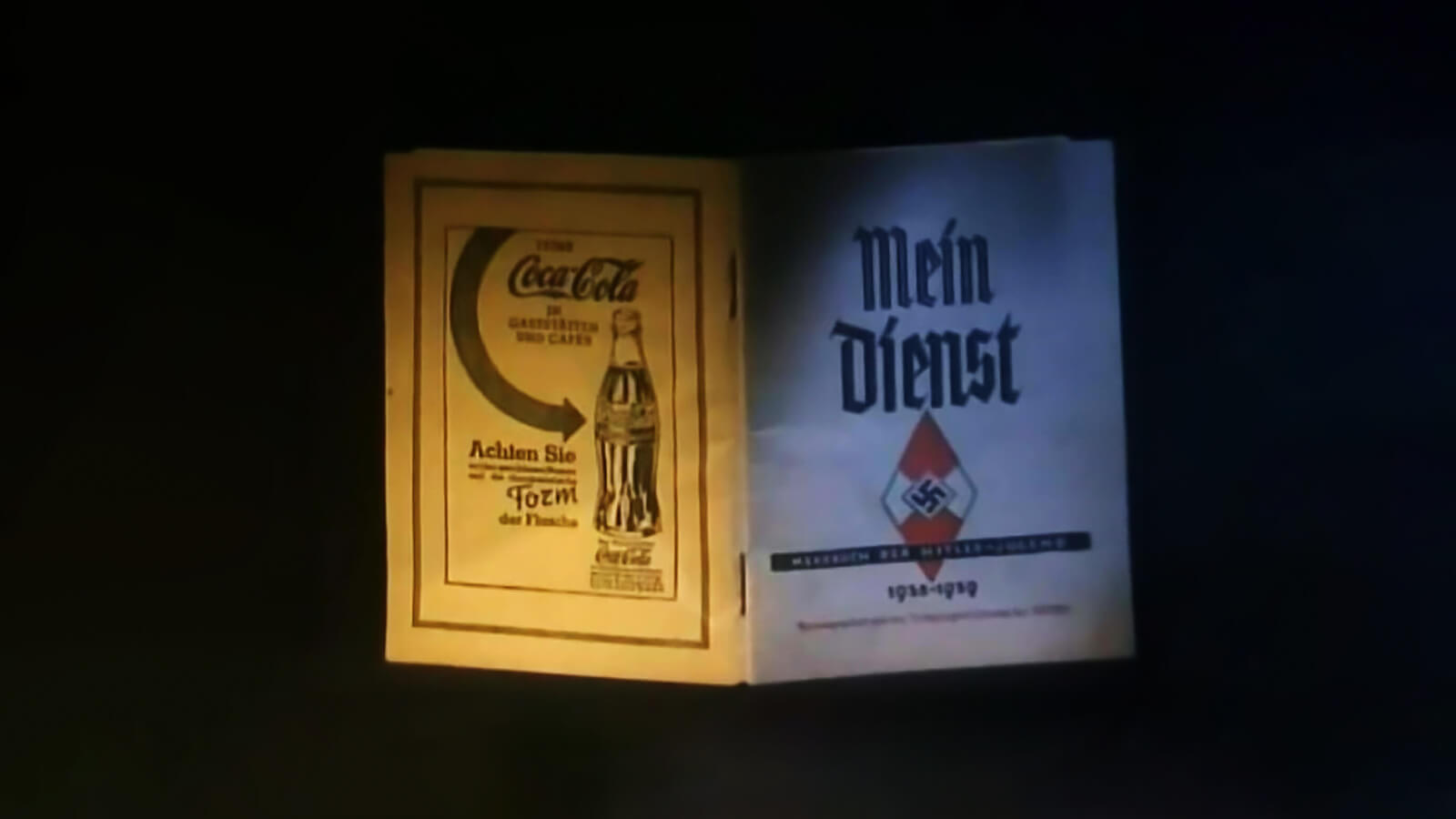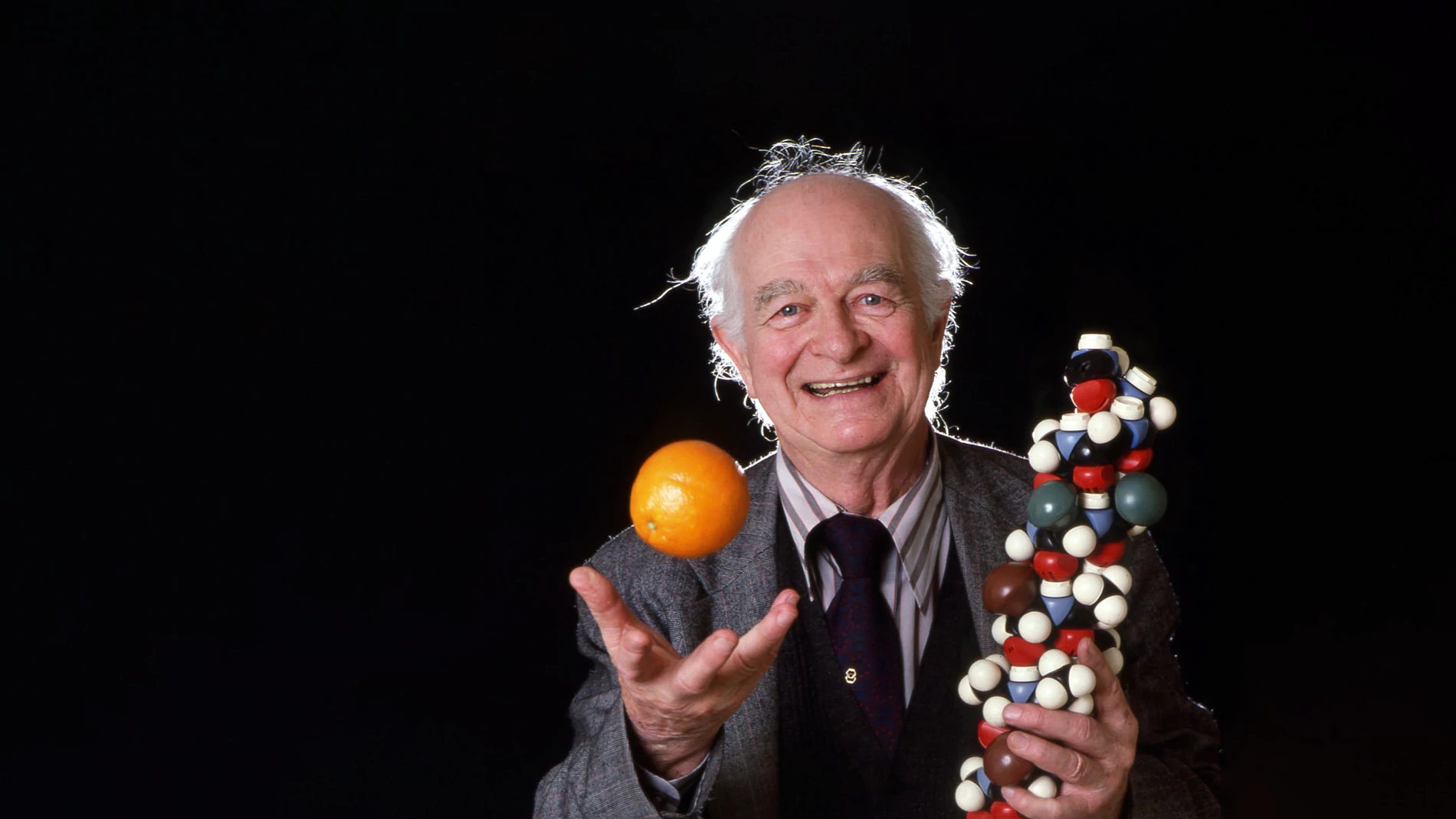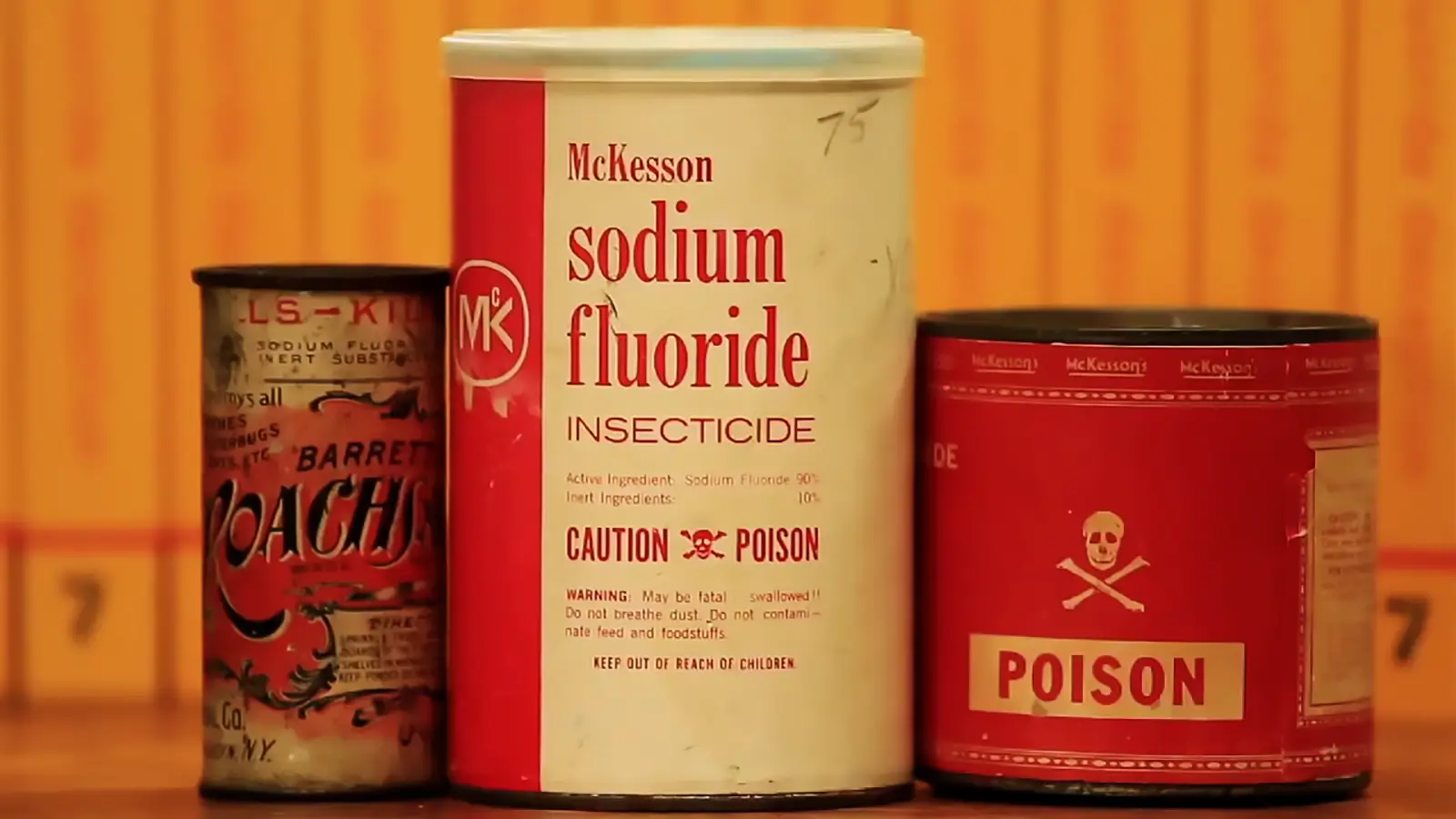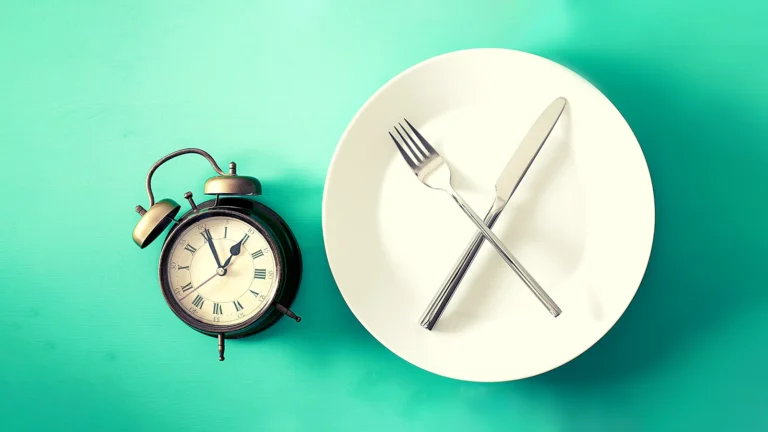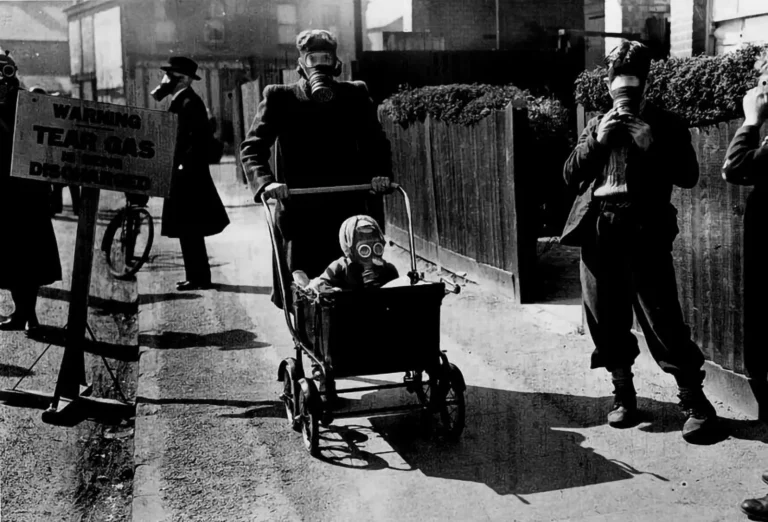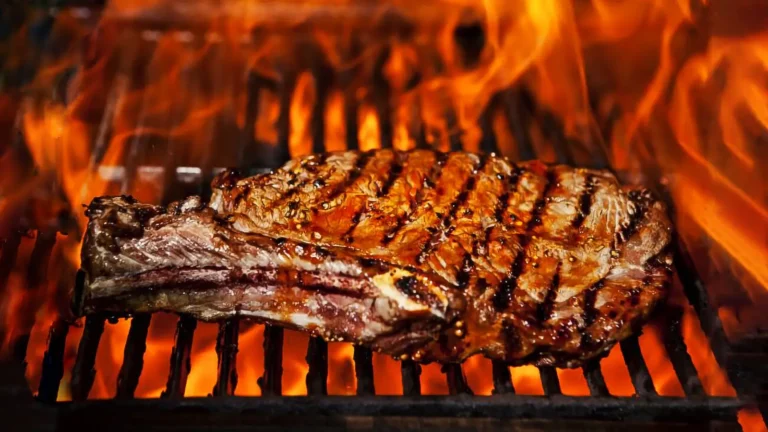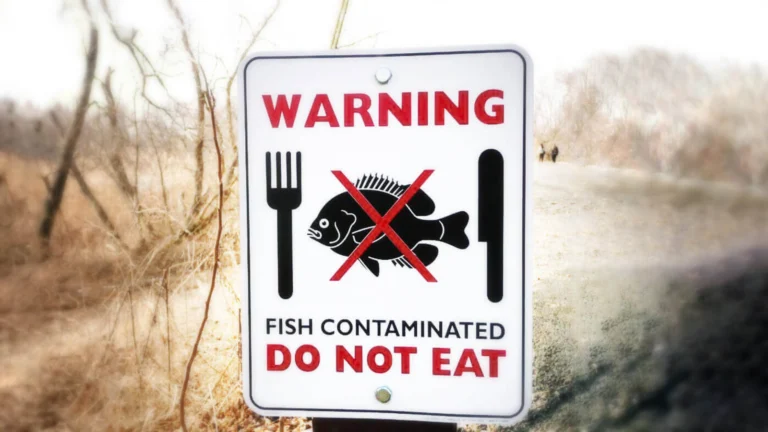L'histoire de Big Pharma - IG Farben
La partie du monopole des Rockefeller sur les industries chimiques et médicales est entrée en vigueur après la Seconde Guerre mondiale. La coopération entre Standard Oil et IG Farben en a fait une réalité.
Milos Pokimica
Écrit par : Milos Pokimica
Examiné Médicalement Par : Dr. Xiùying Wáng, M.D.
Mis à jour le 7 mai 2023”La liberté d'une démocratie n'est pas sûre si le peuple tolère la croissance du pouvoir privé à un point tel qu'il devient plus fort que son État démocratique lui-même. C'est, dans son essence, le fascisme - la propriété du gouvernement par un individu, par un groupe ou par tout pouvoir privé contrôlant.”
-Président Franklin D. Roosevelt
Le monopole de Rockefeller sur les industries chimiques et médicales s'est concrétisé après la Seconde Guerre mondiale. Et ce, à l'échelle mondiale, pas seulement aux États-Unis. La coopération entre Rockefeller et Rothschild a permis de concrétiser ce projet.
De l'autre côté de l'Atlantique, le cartel international de la drogue et de la chimie, IG Farben, appelé "un État dans un État", a été créé en 1925 sous le nom de Interessen Gemeinschaft Farbenindustrie Aktien Gesellschaft, généralement connu sous le nom d'IG Farben, ce qui signifie simplement "le cartel". IG Farben détenait un monopole absolu sur la fabrication de tous les produits chimiques jusqu'à la Seconde Guerre mondiale. Elle a été l'un des principaux bailleurs de fonds du réarmement de l'Allemagne, avec un intérêt particulier pour la production de pétrole pour la nouvelle armée mécanisée de l'Allemagne.
Cela avait commencé en 1904, à travers les six principales entreprises chimiques en Allemagne, qui avaient conclu des accords pour former un cartel final, fusionnant Badische Anilin, Bayer, Agfa, Hoechst, Weiler-ter-Meer et Griesheim-Electron. Le financement principal provenait des Rothschild, qui restaient représentés par leur banquier allemand, Max Warburg, de la société MM Warburg, Hambourg.. Il a ensuite dirigé les services secrets allemands pendant la Première Guerre mondiale et a été conseiller économique privé du Kaiser. Entre-temps, le Kaiser a été renversé, après avoir perdu la guerre, mais Max Warburg n'a pas été exilé avec lui - il était au-dessus de la politique en tant qu'agent d'une puissance supérieure - et il n'est donc jamais allé en Hollande. Il est devenu le conseiller économique du nouveau gouvernement. Il a également représenté l'Allemagne à la conférence de paix de Paris. Max Warburg passe des moments de détente à renouer les liens familiaux avec son frère, Paul Warburg, qui, après avoir élaboré le Federal Reserve Act à Jekyll Island, contrôlait le système bancaire américain pendant la guerre. Il est également présent à Paris en tant que conseiller financier de Woodrow Wilson.
Deux frères contrôlaient deux systèmes bancaires différents dans des pays censés être en guerre l'un contre l'autre. Avant la Seconde Guerre mondiale, Max Warburg siégeait au conseil d'administration d'IG Farben. Son frère Paul Warburg siégeait au conseil d'administration d'I.G. Farben, détenue spécifiquement par une filiale américaine. La famille Warburg était une importante famille de banquiers allemands et américains, d'origine juive allemande et vénitienne, qui portait alors le nom de famille del-Banco. Cependant, à un moment donné, la banque Warburg de Hambourg était sur le point de s'effondrer en 1857, et les Rothschild y ont injecté d'énormes quantités d'argent, devenant ainsi les nouveaux propriétaires de la banque. À partir de cette période, la banque M.M. Warburg et ses partenaires ont effectivement agi comme des façades des Rothschild. Le premier membre connu à utiliser le nom "Rothschild" est Izaak Elchanan Rothschild, né en 1577. En yiddish, le nom Rothschild signifie "manteau rouge". I.G. Farben est rapidement devenue une société dont la valeur nette s'élevait à six milliards de marks et qui contrôlait plus de cinq cents entreprises.
Alors que la République de Weimar commençait à s'effondrer, les responsables de l'IG, voyant l'écriture sur le mur, ont entamé une coopération étroite avec Adolf Hitler, lui fournissant d'énormes quantités de fonds et d'influence politique. Les progrès du cartel I.G. Farben ont suscité l'intérêt et se sont étendus à d'autres industriels. Henry Ford a été assez impressionné et a créé une branche allemande de la Ford Motor Company. IG Farben a acheté quarante pour cent des actions. I.G. Farben a ensuite créé une filiale américaine, appelée American I.G., en coopération avec Standard Oil of New Jersey. En 1930, la Standard Oil déclare avoir acquis le monopole des alcools en Allemagne, grâce à un accord conclu avec IG Farben. Elle s'étend déjà dans les pays européens. industrie alimentaire. Après l'arrivée au pouvoir du parti nazi, John D. Rockefeller a engagé son propre attaché de presse, Ivy Lee, auprès d'Hitler pour travailler comme consultant à plein temps sur le réarmement de l'Allemagne. Ils avaient déjà décidé de réarmer l'Allemagne et d'organiser la Seconde Guerre mondiale, de sorte que les étapes nécessaires à la préparation de la Seconde Guerre mondiale avaient déjà été franchies. La Standard Oil a ensuite construit de grandes raffineries en Allemagne pour les nazis et a continué à leur fournir du pétrole pendant la Seconde Guerre mondiale. En 1939, Frank Howard, vice-président de la Standard Oil, s'est rendu en Allemagne et a pris des dispositions. Il a témoigné plus tard :
"Nous avons fait de notre mieux pour élaborer des plans complets en vue d'un modus vivendi qui fonctionnerait pendant toute la durée de la guerre, que nous intervenions ou non. "
Bien que son nom soit peu connu, Frank Atherton Howard était à l'époque l'un des principaux agents qui dirigeaient les opérations de la Standard Oil. Il a également été directeur du comité de recherche de l'Institut Sloan Kettering dans les années 1930. C'était un agent des Rockefeller et il faisait bien son travail. Son représentant à l'institut Sloan Kettering, Dusty Rhoads, a dirigé les recherches à l'origine de la chimiothérapie. Pendant la Seconde Guerre mondiale, Rhoads dirigeait le service de guerre chimique à Washington, au quartier général de l'armée américaine. Les mêmes hommes ont mené des recherches sur un remède contre le cancer et sur des produits chimiques destinés à tuer des gens pendant les guerres, ce qui semble familier maintenant. Des hommes qui travaillent pour le syndicat Rockefeller. C'est Frank Howard qui a influencé Alfred Sloan et Charles Kettering de General Motors en 1939 pour qu'ils fassent des dons importants au Centre du cancer, qui a ensuite pris leur nom. La seconde épouse de Frank Howard était un membre éminent de l'aristocratie britannique, la duchesse de Leeds. J'écris son état civil pour que nous puissions comprendre ce qu'est en réalité le gouvernement, l'aristocratie, la démocratie, le capitalisme, etc. C'est du pareil au même. Frank Howard était le principal dirigeant chargé de gérer les relations entre Standard Oil et IG Farben et de coordonner les intérêts des deux entreprises. Il a dirigé les recherches visant à faire progresser le caoutchouc artificiel, qui s'est avéré vital pour l'Allemagne pendant la Seconde Guerre mondiale. Plus tard, il a même écrit un livre, "Buna Rubber". IG Farben était également un soutien direct et sans secret du parti nazi.
Lors d'une conférence d'industriels allemands avec des nazis comme Hermann Goering et Heinrich Himmler, qui s'est tenue le 20 février 1933, l'IGF a versé 400 000 reichsmarks au parti nazi. Il s'agit du montant le plus important de la somme totale de 3 millions de reichsmarks collectée lors de cette réunion par les industriels allemands pour la campagne électorale du parti nazi. IG Farben a versé quatre millions et demi de reichsmarks au parti nazi en 1933 ; en 1945, I.G. avait fourni au parti 40 millions de reichsmarks, une somme qui correspondait à toutes les donations d'I.G. à tous les autres bénéficiaires au cours de cette période. Permettez-moi de vous poser la question suivante. Pensez-vous que les gouvernements américain et anglais ne savaient pas ce qui se passait et d'où venait l'argent ? Ils ont planifié et financé l'ensemble de la Seconde Guerre mondiale à dessein. Par exemple, sans l'aide claire de Standard Oil, l'aviation nazie ne pourrait jamais voler en premier lieu. Les avions qui composaient la Luftwaffe avaient besoin d'essence de plomb tétraéthyle pour pouvoir voler. À l'époque, seuls General Motors, Standard Oil et Du Pont avaient la capacité de produire cette substance vitale. Toutes les entreprises en dehors de l'Allemagne. En 1938, Walter C. Teagle, le directeur de Standard Oil, accommode Hermann Schmitz d'IG Farben pour obtenir 500 tonnes de plomb tétraéthyle d'Ethyl, une filiale de British Standard Oil. Un an plus tard, Schmitz est retourné à Londres et a acheté une valeur supplémentaire de 15 millions de dollars de plomb tétraéthyle. Puis retour en Allemagne qui a été transformé en essence d'aviation pour la Luftwaffe.
C'est en 1927 que Standard Oil et IG Farben ont fondé la société "Standard IG Farben". La Standard transmet à IG Farben les brevets sur les procédés d'hydrogénation du charbon et les Allemands lui donnent les brevets sur la fabrication du caoutchouc synthétique. Alors que les puissances européennes voulaient éviter la croissance de l'industrie allemande après la Première Guerre mondiale, les États-Unis ont dépensé d'énormes sommes d'argent pour reconstruire l'Allemagne et n'ont jamais ratifié le traité de Versailles. En fait, ce n'est pas le gouvernement des États-Unis, mais la véritable puissance de l'État profond qui est derrière tout cela. Ils ont même vendu des obligations allemandes sur le marché financier américain. L'une des plus importantes était la "Union Banking Corporation" de George H. Walker. Il a nommé son gendre, Prescott Bush, grand-père du président américain George W. Bush, directeur de la société.
Son petit-fils, le président américain de l'époque, George W. Bush, était dans la mise à jour 3.0 tenant la main du Premier ministre israélien et parlant de l'unité des peuples américain et israélien dans la "guerre du terrorisme", oubliant le fait que son grand-père Prescott utilisait des juifs. travail d'esclave dans son usine de fabrication de main-d'œuvre sidérurgique à Auschwitz.
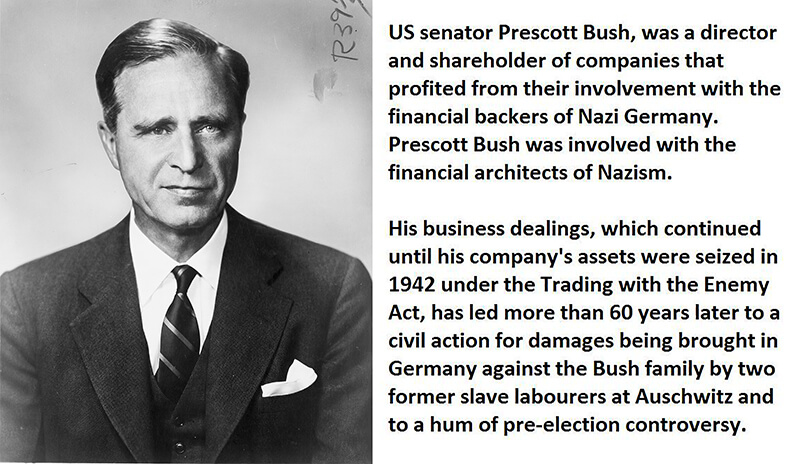
Dans la mise à jour 1.0, le père de Prescott, Samuel P. Bush, a été longtemps président de la société Buckeye Steel Castings, qui appartenait à Frank Rockefeller, le frère de John D. Rockefeller, et qui fournissait des pièces aux chemins de fer d'Edward Henry Harriman qui, à leur tour, fournissaient des expéditions ferroviaires à la Standard Oil de John qui, à son tour, bénéficiait d'un financement monopolistique de la part des Rothschild. Le fils de Samuel, Prescott, était le directeur général d'une usine d'acier nazie en Pologne, Celestion Consolidated Steel, qui, dans la mise à jour 2.0, a transmis des financements américains à son partenaire allemand Fritz Thyssen par l'intermédiaire de l'"Union Banking Corporation" à New York. Fritz Thyssen conclut un contrat avec IG Farben pour l'emploi d'esclaves juifs dans l'usine sidérurgique de Bush au camp de concentration d'Auschwitz.
Dans la deuxième mise à jour, Prescott Busch et Averell Harriman (fils du baron des chemins de fer E. H. Harriman, 48e gouverneur de New York, membre du groupe des sages en matière de politique étrangère et membre de Skull and Bones) se font prendre au piège de la loi sur le commerce avec l'ennemi lorsque le gouvernement américain intervient et saisit toutes les actions de l'Union Banking Corporation.
Dans la mise à jour 4.0, le premier fils de Prescott, George Bush, est directeur de la CIA. George a poussé le roi de la drogue Manuel Noriega à travailler pour la CIA et a permis à des tonnes de cocaïne d'arriver dans les rues américaines via le canal de Panama.
Dans la mise à jour 5.0, le deuxième George Bush, fils de George, s'associe à Salem Ben Laden, frère aîné d'Oussama Ben Laden, dans une société pétrolière texane appelée Arbusto Energy. La mise à jour 5 présente également Neil Bush, le frère cadet de George, qui a escroqué des personnes âgées dans le cadre du scandale Silverado Saving and Loan, qui a coûté 1,3 milliard de dollars aux contribuables américains.
Dans la dernière mise à jour 6.0, nous voyons George W. Bush, le président américain, visiter un camp de la mort à Auschwitz pour prononcer un discours sur la "résistance au pouvoir du mal", où son grand-père a contribué à bâtir la fortune de la famille Bush grâce à la main-d'œuvre juive esclave gratuite. George Herbert Walker, grand-père maternel du président George H. W., a également obtenu de gros contrats avec les Allemands, avant et après 1933. Au conseil d'administration de sa "Walkers American Shipping and Commerce Company" et de sa Hamburg-America Line figurait Emil Helfferich, membre du "Freundeskreis Reichsführer- SS" et, jusqu'à la fin de la seconde guerre mondiale, président de la Deutsch-Amerikanische Petroleum Gesellschaft, plus tard ESSO, et de la Vacuum Oil Company à Hambourg.
Le principal problème de l'attaque allemande contre l'Union soviétique était le besoin de carburant pour les chars et les avions. Grâce aux brevets de la Standard Oil, les Allemands peuvent produire du carburant à partir de leur propre charbon, mais cela ne suffit pas. Après le début de la bataille en Europe, les Anglais s'irritent des livraisons américaines de matériaux vitaux à l'Allemagne nazie. La Standard Oil a immédiatement transféré l'immatriculation de l'ensemble de sa flotte au Panama afin d'éviter toute recherche ou saisie par les Britanniques. Ces navires se déplacent pour acheminer du pétrole à Ténériffe, où ils ravitaillent des pétroliers allemands pour les expédier à Hambourg. Cette supercherie a été révélée le 31 mars 1941, lorsque le département d'État américain a publié un rapport complet sur les terminaux de ravitaillement au Mexique, en Amérique centrale et en Amérique du Sud. Que s'est-il passé alors ? Il ne s'est rien passé. Il n'existe aucun rapport faisant état d'une quelconque forme d'action, car tout cela avait été planifié à un niveau plus élevé que le seul gouvernement américain.
Il convient toutefois de noter que le 17 avril 1945, la Chase National Bank a été jugée par un tribunal fédéral, accusée d'avoir enfreint la loi sur le commerce avec l'ennemi en changeant des marks allemands en dollars américains. Comme de nombreux pays ont rejeté la monnaie allemande tout au long de la guerre, les nazis ont utilisé des banques internationales comme la Chase National des Rockefeller pour changer la monnaie en une monnaie qui serait acceptée comme le dollar, ce qui leur aurait permis d'acheter le matériel dont ils avaient besoin pour prolonger la guerre.
Au regard des opinions tranchées d'Adolf Hitler lui-même sur le contrôle des Juifs en Allemagne, il serait difficile d'expliquer le rôle d'I.G. Farben à l'époque nazie. Pourquoi ? Parce que I.G. Farben était principalement contrôlée par des banquiers juifs, les Rothschild en particulier. Dans les années 1920, elle a été accusée par les nazis d'être une "société juive capitaliste internationale".
L'étude exhaustive de Peter Hayes sur I.G. Farben souligne qu'en 1933, dix juifs siégeaient au conseil d'administration de l'entreprise et n'oublions pas qu'elle a été créée grâce au financement de Rothschild. La même entreprise qui avait acheté le brevet du pesticide Zyklon B, dans les années 1920 et l'avait ensuite distribué aux chambres à gaz d'Auschwitz. Outre une usine d'huile synthétique et de caoutchouc à Auschwitz, la société a également mené des expériences de drogue sur des détenus vivants. Cet appareil utilisait autant d'électricité que toute la ville de Berlin et plus de 25 000 détenus du camp sont morts pendant sa construction. IG Farben a finalement construit son propre camp de concentration, connu sous le nom de Monowitz, qui était plus proche de l'usine afin de réduire la nécessité de déplacer des prisonniers déjà affamés au bord de la mort sur plusieurs kilomètres, ce qui réduisait l'efficacité de leur travail. La même compagnie qui nous donne de l'aspirine.
Dans l'image ci-dessous, vous pouvez voir le camp de concentration construit pour l'IG Farben Monowitz, et en dessous du camp le siège de l'IG Farben intact par la guerre et les bombes américaines (pas par accident).
Le livre de Hingham, "Trading with the Enemy", fournit une documentation détaillée sur les activités des Rockefeller pendant la Seconde Guerre mondiale.
Pendant que les avions d'Hitler déversaient des tonnes de bombes sur Londres, ils dépensaient de l'argent en redevances sur l'essence qu'ils brûlaient à la Standard Oil., en vertu des accords de brevet existants. Après la guerre, la reine Elizabeth a visité les États-Unis. Elle est restée dans une seule maison privée lors de sa visite, le domaine du Kentucky de William Irish, de Standard Oil. Suite à l'incroyable destruction de la plupart des villes allemandes par les bombardements aériens de la Seconde Guerre mondiale, les bâtiments de l'IG sont restés intacts par miracle. Le "démantèlement" d'IG Farben de 1945 à 1952 par le gouvernement militaire allié a été un processus similaire au "démantèlement" de l'empire Standard Oil par décision de justice en 1911. Les trois grandes sociétés créées (issues de Farben) se comportaient toujours comme un cartel.
Qui les possède tous ? Qui possède Bayer par exemple ?
La réponse est le cartel bancaire international. En 1939, alors qu'il devenait clair que l'Allemagne serait bientôt impopulaire aux États-Unis, Standard Oil aida IG Farben à couvrir ses avoirs américains dans le domaine de la drogue et de la chimie.. L'American IG a été créée et a transféré une grande partie des finances vers le marché américain en achetant Winthrop Chemical, Grasseli Chemical Works (alias General Aniline Works), Agfa-Film Company, Sterling Products Company et les sociétés Magnesium Development. Standard Oil a reçu 15% des actions du nouveau trust chimique germano-américain. Les efforts déployés pour associer la société DuPont à cette fusion ont partiellement échoué. Walter Teagle (président de la Standard Oil Company), Paul Warburg (agent de Rothschild) et Edsel Ford figuraient parmi les administrateurs de la société "de camouflage". Le conseil d'administration d'American I.G. comptait trois directeurs de la Federal Reserve Bank of New York. American I.G. avait également des liens avec la Bank of Manhattan (qui deviendra plus tard la Chase Manhattan), Ford Motor Company, Standard Oil of New Jersey et A.E.G. (German General Electric). Trois membres allemands et non américains du conseil d'administration de cette A.E.G. américaine ont été reconnus coupables lors des procès pour crimes de guerre de Nuremberg. Parmi ces Allemands figurait Max Ilgner, directeur des bureaux d'I.G. Farben N.W. Seven à Berlin, c'est-à-dire le bureau de renseignement nazi d'avant-guerre. Avec Pearl Harbor et l'entrée des États-Unis dans la Seconde Guerre mondiale, la société américaine IG Farben a choisi de dissimuler ses origines et ses alliances allemandes, avec l'aide de la Standard Oil. Peu avant l'attaque de Pearl Harbor, elle a changé de nom pour devenir la General Aniline & Film Corporation. Auparavant, l'IG Farben a acheté un nombre non divulgué d'actions de Monsanto Chemical, Drug Incorporated, Mission Corporation, Dow Chemical, Schering & Company, Ozalid Corporation, Antidolar Company, Aluminum Corporation, Standard Oil of California, Standard Oil of Indiana, Standard Oil of New Jersey, et DuPont Company. Elle a également repris la société Hoffman-LaRoche. Sous le régime nazi, la branche allemande du groupe chimique Standard Oil n'était plus qu'une seule entreprise. Elle a été fusionnée avec des centaines d'accords de cartel.
I.G. Farben a été dirigée, jusqu'en 1937, par la famille Warburg. Agent bancaire de Rockefeller qui a contribué à la conception de l'eugénisme dans l'Allemagne nazie et qui n'était en fait, une fois de plus, qu'un agent du syndicat Rothschild. Après l'attaque allemande contre la Pologne en 1939, la Standard Oil a promis de maintenir la fusion avec I.G. Farben même si les États-Unis entraient en guerre. Cette fusion a probablement été planifiée par le cartel bancaire Rothschild de Londres avant la guerre. Rockefeller représentait dans une certaine mesure les intérêts de la famille Rothschild de l'autre côté de l'Atlantique, mais c'est la même force de contrôle qui a financé tout cela. Lorsque les soldats américains sont entrés dans la ville industrielle de Frankfort, ils sont restés stupéfaits de découvrir les bâtiments en parfait état et l'immense usine du groupe chimique allemand IG Farben intacte. Les aviateurs américains ont complètement démoli toutes les autres structures de la ville. L'usine Farben de Frankfort, l'une des plus grandes constructions de la ville, est miraculeusement restée intacte. Ce n'est pas un hasard si le gouvernement d'après-guerre de l'Allemagne, le gouvernement militaire allié, a également installé ses bureaux dans le bâtiment d'I.G. Farben. Cette administration était dirigée par le général Lucius Clay, qui devint plus tard associé de Lehman Brothers. Ce que les soldats ne savaient pas non plus, c'est que le secrétaire à la Guerre, Robert P. Patterson, était un avocat de la famille Rockefeller. Il avait été nommé par le président Roosevelt à la sortie du cabinet Dillon, Read, and Company. La société Dillon-Read n'est pas seulement une filiale de Rockefeller, c'est aussi la banque qui a financé la société allemande IG Farben et qui s'est occupée des détails commerciaux de la création de la société américaine de "camouflage" du cartel chimique allemand.
En médecine, le cartel Rockefeller continue de protéger son monopole médical. Son contrôle de l'industrie du cancer passe par le Sloan Kettering Cancer Center. Toutes les grandes entreprises pharmaceutiques sont financées, chacune par un dirigeant de la Chase Manhattan Bank, de la Standard Oil Company ou d'autres entreprises Rockefeller. L'American College of Surgeons garde le contrôle des hôpitaux par l'intermédiaire du puissant Hospital Survey Committee, dont les membres sont nommés par et pour représenter le contrôle des Rockefeller. De l'autre côté de l'Atlantique, c'est la même chose.
BASF SE (Allemagne) - La plus grande entreprise chimique au monde ! En 2020, elle a réalisé un chiffre d'affaires de 60 milliards d'euros.
Bayer I.G. (Allemagne) - L'une des plus grandes entreprises pharmaceutiques au monde. Elle a débuté en tant qu'entreprise de teintures et a été regroupée au sein d'IG Farben en 1881.
Hoechst AG (Allemagne) – l'un des plus grands fabricants pharmaceutiques au monde, aujourd'hui Sanofi-Aventis;
Sanofi–Aventis – (France), créée par une fusion en 2004 entre Aventis (fusion en 1999 de Rhône-Poulenc et Hoechst AG (IG Farben)) et Sanofi;
Wyeth - (USA) En 2002 a été renommé de Sterling Drug Inc. (la filiale américaine d'IG Farben) puis a fusionné avec Pfizer en 2009.
Pfizer – (États-Unis), Fondée en 1849 à New York. A racheté Warner-Lambert, Parke-Davis, Upjohn, Pharmacia (Monsanto) et Wyeth (la filiale américaine d'IG Farben).
Agfa-Gevaert N.V. (Agfa) fournit aux hôpitaux et autres organisations de soins des produits et systèmes d'imagerie, ainsi que des systèmes d'information et des systèmes industriels à jet d'encre pour les industries de l'impression et du graphisme. Le commerce d'Agfa-Gevaert est aujourd'hui 100% business-to-business.
Références :
Passages sélectionnés à partir d'un livre : Pokimica, Milos. Devenir vegetarien? Examen de la science, partie 2. Kindle éd., Amazone, 2018.
Articles Similaires
Vous avez des questions sur la nutrition et la santé ?
J'aimerais avoir de vos nouvelles et y répondre dans mon prochain post. J'apprécie votre contribution et votre opinion et j'ai hâte d'avoir de vos nouvelles bientôt. Je vous invite également à nous suivre sur Facebook, Instagram et Pinterest pour plus de contenu sur l'alimentation, la nutrition et la santé. Vous pouvez y laisser un commentaire et entrer en contact avec d'autres passionnés de santé, partager vos conseils et expériences, et obtenir le soutien et les encouragements de notre équipe et de notre communauté.
J'espère que ce billet a été instructif et agréable pour vous et que vous êtes prêt à mettre en pratique les connaissances que vous avez acquises. Si vous avez trouvé ce billet utile, veuillez le partager à vos amis et à votre famille qui pourraient également en bénéficier. On ne sait jamais qui peut avoir besoin de conseils et de soutien dans son parcours de santé.
– Vous pourriez aussi aimer –

Apprendre la Nutrition
Milos Pokimica est docteur en médecine naturelle, nutritionniste clinique, rédacteur en santé médicale et nutrition et conseiller en sciences nutritionnelles. Auteur de la série de livres Devenir vegetarien ? Examen des sciences, il exploite également le site Web de santé naturelle GoVeganWay.com
Avis de non-responsabilité médicale
GoVeganWay.com vous propose des critiques des dernières recherches liées à la nutrition et à la santé. Les informations fournies représentent l'opinion personnelle de l'auteur et ne sont pas destinées ni implicitement à remplacer un avis médical professionnel, un diagnostic ou un traitement. Les informations fournies sont fournies à titre informatif uniquement et ne sont pas destinées à remplacer la consultation, le diagnostic et/ou le traitement médical d'un médecin ou d'un prestataire de soins de santé qualifié.NE JAMAIS IGNORER LES CONSEILS MÉDICAUX PROFESSIONNELS OU RETARDER LA RECHERCHE DE SOINS MÉDICAUX EN RAISON DE QUELQUE CHOSE QUE VOUS AVEZ LU OU ACCÉDÉ SUR GoVeganWay.com
N'APPLIQUEZ JAMAIS DE CHANGEMENTS AU STYLE DE VIE OU TOUT CHANGEMENT À LA SUITE DE QUELQUE CHOSE QUE VOUS AVEZ LU SUR GoVeganWay.com AVANT DE CONSULTER UN PRATICIEN MÉDICAL AGRÉÉ.
En cas d'urgence médicale, appelez immédiatement un médecin ou le 911. GoVeganWay.com ne recommande ni n'approuve aucun groupe, organisation, test, médecin, produit, procédure, opinion ou autre information spécifique pouvant être mentionné à l'intérieur.
Choix de l'éditeur -
Milos Pokimica est rédacteur spécialisé dans la santé et la nutrition et conseiller en sciences nutritionnelles. Auteur d'une série de livres Devenir vegetarien ? Examen des sciences, il exploite également le site Web de santé naturelle GoVeganWay.com
Derniers articles –
Top Des Nouvelles Sur la Santé - ScienceDaily
- These simple habits could make your brain 8 years younger, study findsle décembre 15, 2025
New research shows that your brain’s “true age” can shift dramatically depending on how you live, with optimism, restorative sleep, stress management, and strong social support acting like powerful anti-aging tools. Using advanced MRI-based brain-age estimates, scientists found that people with multiple healthy lifestyle factors had brains up to eight years younger than expected — even among those living with chronic pain.
- Anxiety and insomnia linked to sharp drops in key immune cellsle décembre 15, 2025
Natural killer cells act as the immune system’s rapid-response team, but the stress of anxiety and insomnia may be quietly thinning their ranks. A study of young women in Saudi Arabia found that both conditions were linked to significantly fewer NK cells—especially the circulating types responsible for destroying infected or abnormal cells. As anxiety severity increased, NK cell levels dropped even further, suggesting a stress-driven weakening of immune defenses.
- Cannabis compounds show unexpected power against ovarian cancerle décembre 15, 2025
Scientists have discovered that key compounds from cannabis—CBD and THC—show surprisingly strong effects against ovarian cancer cells. Used together, they slow cell growth, reduce colony formation, and may even block the cancer’s ability to spread. Even more promising, the treatment caused minimal harm to healthy cells and appears to work by restoring a disrupted signaling pathway that fuels tumor growth.
- Mayo Clinic neurosurgeon reveals 8 back pain myths to stop believingle décembre 15, 2025
Back pain is wrapped in persistent myths, but many are far from the truth. From misconceptions about heavy lifting and bed rest to confusion over posture, exercise, and surgery, Dr. Meghan Murphy breaks down what really causes pain and what actually helps. Her insights reveal that everyday habits, movement, and smart prevention often make a bigger difference than people realize.
- Stem cell pain sponge soaks up osteoarthritis joint pain and protects cartilagele décembre 15, 2025
SereNeuro Therapeutics revealed promising results for SN101, a first-in-class iPSC-derived therapy designed to treat chronic osteoarthritis pain while protecting joint tissue. Instead of blocking pain pathways, SN101 uses lab-grown nociceptors that act like sponges, soaking up inflammatory pain factors without sending pain signals. These cells also release regenerative molecules, offering disease-modifying potential that stands apart from traditional corticosteroids and single-target drugs like […]
- Indoor tanning triples melanoma risk and seeds broad DNA mutationsle décembre 15, 2025
Researchers discovered that tanning beds cause widespread, mutation-laden DNA damage across almost all skin, explaining the sharply increased melanoma risk. Single-cell genomic analysis revealed dangerous mutations even in sun-protected regions. Survivors’ stories underscore how early tanning habits have lifelong consequences. The findings push for stricter policies and clear public warnings.
- Researchers identify viral suspects that could be fueling long COVIDle décembre 15, 2025
Scientists are uncovering a new possibility behind long COVID’s stubborn symptoms: hidden infections that awaken or emerge alongside SARS-CoV-2. Evidence is mounting that viruses like Epstein-Barr and even latent tuberculosis may flare up when COVID disrupts the immune system, creating lingering fatigue, brain fog, and other debilitating issues.
PubMed, #régime-vegan –
- Healthful and Unhealthful Plant-Based Diets and Their Association with Cardiometabolic Targets in Women Diagnosed with Breast Cancer: A Cross-Sectional Analysis of a Lifestyle Trialle décembre 11, 2025
CONCLUSIONS: Maintaining cardiometabolic risk factors within normal ranges is clinically relevant in BCS, and this may be more likely when a plant-based diet is consumed, especially if low in unhealthy plant foods.
- Dietary and Lifestyle Patterns and Their Associations with Cardiovascular and Inflammatory Biomarkers in Vegans, Vegetarians, Pescatarians, and Omnivores: A Cross-Sectional Studyle décembre 11, 2025
Background: Plant-based diets are associated with reduced cardiometabolic risk, yet the influence of lifestyle behaviors on these benefits remains insufficiently understood. Objective: To assess the combined impact of dietary patterns and lifestyle behaviors on body composition, lipid profiles, and inflammatory biomarkers in healthy young adults. Methods: In this cross-sectional study, 155 participants aged 18-39 years were categorized into four dietary groups: vegans (n = 48), vegetarians (n […]
- Functional and Nutritional Properties of Lion’s Mane Mushrooms in Oat-Based Desserts for Dysphagia and Healthy Ageingle décembre 11, 2025
Hericium erinaceus (Lion’s Mane mushroom) is a medicinal species recognised for its neuroprotective and antioxidant properties. This study investigated its potential as a functional ingredient in oat milk-based desserts formulated for individuals with dysphagia. Freeze-dried Lion’s Mane powder (LMP), containing high-quality protein (~16%, amino acid score 88%), dietary fibre (~31%), and phenolic compounds (72.15 mg GAE/g), was incorporated at varying levels using gelatin or iota-carrageenan […]
- “A football team with no midfield”: A qualitative analysis of anti-vegan stigma in Italyle décembre 7, 2025
A growing body of research has demonstrated the prevalence of unfavourable attitudes towards individuals who adhere to a vegan diet and has provided empirical evidence to support the existence of an anti-vegan ideology. The present study aims to contribute to extant knowledge by examining the social perception of veganism and vegans in Italy. Italy is a nation characterised by a traditional culture of food that serves as a significant catalyst for collective identification and national pride….
- Plant-based dietary index on the Mediterranean and a vegan diet: a secondary analysis of a randomized, cross-over trialle décembre 5, 2025
CONCLUSION: These findings suggest that, replacing animal products even with the “unhealthful” plant-based foods on a vegan diet was associated with weight loss.
Messages aléatoires –
Postes en vedette -
Dernières Nouvelles de PubMed, #alimentation végétale –
- Identification of effective plant-based oils for use in aquafeed: An evaluation of impact on gamete quality and developmental success using zebrafish (Danio rerio) as a screening organismpar Seyed-Mohammadreza Samaee le décembre 14, 2025
To evaluate the effectiveness of zebrafish as a screening system for identifying appropriate plant oils (POs) for aquafeed, Artemia nauplii (AN) were enriched with three single- cultivar olive oils (OO): Koroneiki, Parseh, and Arghavan. The resulting AN (ANKor, ANPar, ANArg, and AN36 [36 h starved AN, control]) were then fed to 360 fish (3.5 cm) for one month. The fatty acid (FA) profile of the AN was reflected in the ova and influenced both sperm motility and density, which in turn affected […]
- The Effect of Dietary Interventions on Human Vascular Function in the Context of Acute Psychological Stress: A Scoping Reviewpar Rosalind Baynham le décembre 14, 2025
Episodes of acute psychological stress increase the risk for cardiovascular diseases, partially through stress-induced impairments in vascular function. During psychologically stressful periods, individuals are more likely to consume unhealthy foods and fewer fruits and vegetables. Yet, the impact of dietary choices and their nutritional composition on vascular function in the context of psychological stress is unclear. In this scoping review, comprehensive database searches were carried out […]
- Plant-based diets, gut microbiota, blood metabolome, and risk of colorectal, liver and pancreatic cancers: results from a large prospective cohort study of predominantly low-income Americanspar Fangcheng Yuan le décembre 14, 2025
CONCLUSIONS: A diet high in healthy plant foods and low in animal foods was inversely associated with liver cancer risk and with CRC risk among screening-naïve participants. These associations may be partly mediated through gut microbiota and systemic metabolism.
- Vegetarian diet and likelihood of becoming centenarians in Chinese adults aged 80 years or older: a nested case-control studypar Yaqi Li le décembre 14, 2025
CONCLUSIONS: Targeting individuals of advanced age (80+ years) in China, we found that individuals following vegetarian diet had lower likelihood of becoming centenarians relative to omnivores, underscoring the importance of a balanced high-quality diet with animal- and plant-derived food composition for exceptional longevity, especially in the underweight oldest-old.
- Priority of nutrition and exercise in depression management: triangulating mini-review of past and recent evidence with clinical practice guidelinespar Shannon Rogers le décembre 14, 2025
CONCLUSIONS: Disparities that exist in leading depression management guidelines vis-à-vis inclusion of evidence-informed nutrition and PA/PE recommendations, warrant reconciliation. Evidence supporting anti-depressant WFPB nutrition and limiting pro-inflammatory animal-sourced food and UPF and supporting anti-inflammatory aerobic exercise and resistance training warrants being translated into national/international depression management guidelines as consistently as recommendations for…
- The effect of a diet based on vegetable and dairy protein on biochemical and functional indicators of sarcopenia in patients with liver cirrhosis: a randomized controlled trialpar Mahdiyeh Taghizadeh le décembre 13, 2025
CONCLUSIONS: In conclusion, a vegetable and dairy protein-based diet effectively inhibited significant elevations in ammonia levels compared to the standard diet in persons with liver cirrhosis; however, anthropometric parameters and muscle function did not differ between two groups.
